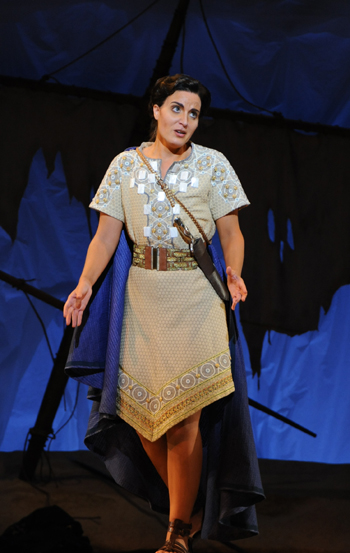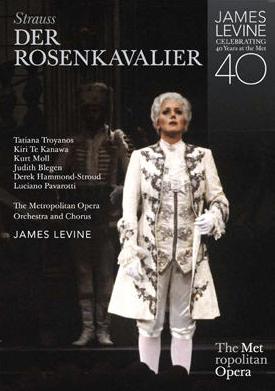
Former resident mezzo-soprano, Betany Coffland, as Idamante in Opera San José’s Idomeneo, photo credit: Pat Kirk, 2011
Opera San José: If you happened to see Opera San José’s productions of Idomeneo or Faust last season you might be pondering this very question, so we asked General Manager Larry Hancock to offer his insights on the evolution of trouser roles, roles that refer to any male character that is sung by a female singer, most often a mezzo soprano. Opera audiences are asked to suspend disbelief and accept the character as male even if the singer is not, but how did the practice begin? According to Larry, we have to go back a few hundred years…
Hancock: Sexual ambiguity was rampant in opera for its first two hundred years. Opera began its history when Catholic churches were maintaining choirs with men who had been surgically altered to preserve their treble voices (women were not allowed to sing at mass, and it must have seemed a shame to lose closely trained and gifted boy sopranos just because they were turning into teenagers.) At any rate, Italy was entirely at ease with male sopranos and altos. It was then no stretch for these beautifully trained singers to make the short step from cathedrals to theatres and take on the roles of adolescent males as well as females of all ages. Except in France, where mutilating boys was thought horrific, castrati became the rock stars of the Baroque all over Europe. Even Baroque heroes sang in the treble range, from Orlando to Julius Caesar, Alexander the Great to Nero.
In modern times, Marilyn Horne and other important mezzo-sopranos brought these roles originally sung by castrati back to the stage.
(Marilyn Horne sings the title role in Vivaldi’s Orlando furiouso, San Franciso Opera, 1989)
Today we have a large number of countertenors (falsettists, not castrati), such as David Daniels, Brian Asawa, Terry Barber and many others, who are popular in the Baroque repertoire.
This practice of trouser roles has come down to modern audiences not only in Baroque operas but in many 19th-century French operas, and some others, as well. To mention a few, Mozart’s The Marriage of Figaro features a mezzo-soprano in the role of fourteen-year-old Cherubino, while Gounod’s Faust features a mezzo-soprano as the adolescent Siébel.
(Frederica von Stade as Cherubino in The Marriage of Figaro, The Glyndebourne Festival in 1973)
The same is true of Richard Strauss’s opera Der Rosenkavalier, which features a mezzo-soprano as Octavian.
Opera San José’s upcoming production of Johann Strauss’s operetta, Die Fledermaus, features a mezzo-soprano in the role of the oh-too-bored teenager, Prince Orlofsky. I have a suspicion that the reason for the 19th-century pants roles was more about seeing a woman’s legs than the quality of her voice… but that’s just an opinion.
Opera San José: And what about contemporary opera companies like Opera San José continuing the tradition of casting female singers in male roles?
According to writer Karen Finch of Suite101.com the reasons are largely historical:
Where the role was originally played by a castrato, the options are to cast a woman dressed in male costume, use a countertenor, or to drop the pitch of the role by an octave and cast a male tenor. Using the latter choice means that the dynamic and color of the role changes considerably. Countertenors are comparatively rare, so casting them is not a common solution. Using a woman offers the most authentic sound that is closest to the castrati of the time.
A second practice dates to the mid 1800s, when it was common to write leading male roles for high voices. This was after the decline of the castrati in the early 1800s, so it is thought that these parts were always intended as pants roles.
The other common tradition, which continues into contemporary operatic composition, is the casting of women as children and young adolescents, so again these parts were always intended to be played by women.
Regardless of tradition, trouser roles continue to be both a wonderful opportunity and challenge for female opera singers. We hope you will suspend disbelief and join us for Die Fledermaus opening November 10th as resident mezzo-soprano, Nicole Birkland, and affiliate artist, Rebecca Krouner, alternate in one of the most famous trouser roles, Prince Orlofsky.

















